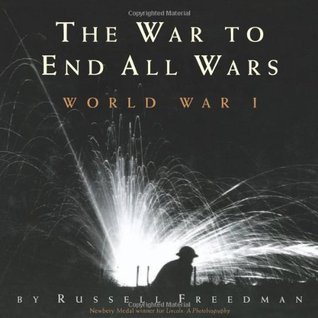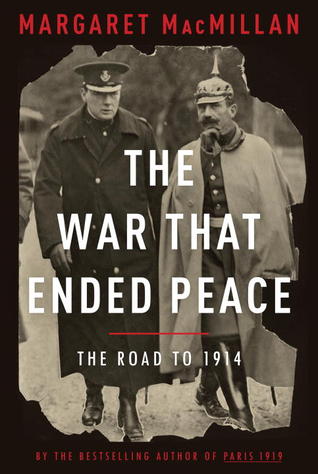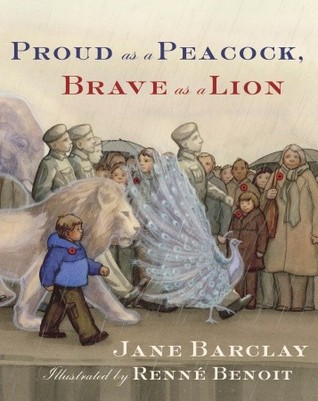Every year on Remembrance Day, we remember the sacrifices made in World War I. I’ve written about it several times before with children’s picture books: The Eleventh Hour by Jacques Goldstein (reviewed here), Why? by Nikolai Popov and Terrible Things by Eve Bunting (reviewed here), and Once a Shepherd by Glenda Millard & Phil Lesnie (reviewed here), all titles I still recommend for all ages for Remembrance Day and beyond. But truth be told, I’m not much of a history buff: I didn’t pay that much attention in grade 10 Canadian history, and it kind of only came to me this year that I don’t actually know/remember what the causes of WWI were (yikes, I know). I remembered that there were several underlying causes that made the conditions ripe for the explosion of war with one event (though what that event was, I had also forgotten), but the details were lost to me. So if you, like me, weren’t paying attention in Canadian history class back in high school, let’s revisit the causes that led up to the Great War together as we remember those who lost their lives to the war.
So I say, but as basically every source notes, the causes of World War I aren’t entirely agreed upon even now, with the exception perhaps of the assassination of Archduke Franz Ferdinand, heir presumptive to the Austro-Hungarian throne, being the immediate cause, and acknowledgement of several different factors playing a larger role than others (some of which outlined below). As for all that had led up to that moment, here are a few of the main underlying causes (following Thought Co. as the main source, supplemented with History.com, Wikipedia, and the Canadian War Museum):
- Mutual Defense Alliances that led to a domino effect, pulling in country after country upon the initial declaration of war on Serbia by Austria-Hungary. Kind of like when your friend gets into a fight and you get dragged in, as do the other person’s friends, then your friends’ friends get a whiff of what’s going down and come to your aid, and so on and so forth.
- See the Triple Entente and the Central Powers, for example, though the Triple Entente wasn’t technically a mutual defense alliance so much as an understanding(? How this worked at the time and what an understanding was understood to be good for is beyond me, but it appears to have worked much the same way as an alliance in practice considering it was acted upon…)
- Imperialism, which led to high tensions around geographical regions with valuable resources multiple countries wanted to lay claim to having the right to access
- See the Second Moroccan Crisis (1911), for example
- But also the desire to expand borders (it seems like in particular taking what was then under the Ottoman Empire’s hold): see the Italian colonization of Libya (1911) and Balkan Wars (1912-13), which “exposed the shakiness of the Ottoman Empire and its slipping control over peripheral territories” (History.com, link to VPL catalogue added by me).
- Militarism – arms races between countries coupled with military training for young men so as to render them war-ready
- The First German Naval Law (1898) didn’t seem to work out quite the way that it was intended to, according to History.com: ““Tirpitz aimed at forcing Britain into an alliance with Germany on German terms,”… Instead, the British responded by building even more ships, and by ending their late 1880s policy of “splendid isolation” to form alliances with Japan, France and Russia.” (History.com)
- The rise of Nationalism throughout Europe
- Assassination of Duke Franz Ferdinand, though it might not really have been about the Duke per se so much as this being the event that sparked all the underlying tensions into full-blown war
Did I miss anything big? I wouldn’t be surprised if I did – as I mentioned, I’m not a huge history buff – but even if I didn’t, there were a number of other smaller, or at least more specific, events that also contributed to the lead-up to the start of the war. I can’t imagine being able to keep straight all of the different political positions, treaties, understandings-not-alliances, actual alliances, etc. at any given time, let alone as they shifted! For a better picture of the events and powers at play leading up to 1914, check out The War that Ended Peace: The Road to 1914 by Margaret MacMillan (also available on Overdrive), and a breakdown of the very beginning of WWI is covered in The Guns of August: The Outbreak of World War I by Barbara W. Tuchman (also available on Overdrive). There’s also an interactive timeline on The National WWI Museum and Memorial website (American) that walks you through WWI as it happened, along with a timeline on the Library of Congress.
On the other hand, these photos of preserved landscapes and what they look like now are stunning, and the lack of people within frame makes it almost difficult to reconcile these photos as being the same places where battles once took place, if not for the trenches and craters in the ground.
For more on what led up to WWI, along with the battles, and books on Remembrance Day for kids, check out some of these titles and links to our catalogue:
- Books about the causes of World War I on our catalogue
- A Mad Catastrophe: The Outbreak of World War I and the Collapse of the Habsburg Empire by Geoffrey Wawro
- To End All Wars: A Story of Loyalty and Rebellion, 1914-1918 by Adam Hochschild (also available on Overdrive)
- A general search on our catalogue of non-fiction books for adults about World War I
- And same for children
- Along with items about Remembrance Day


